#Saint George’s Church
Explore tagged Tumblr posts
Text
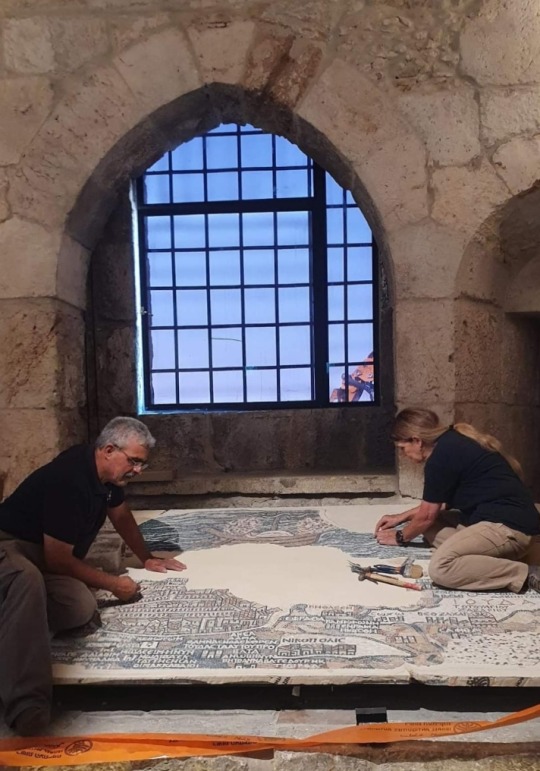
What did Jerusalem’s main road look like about 1,500 years ago?
An archaeological excavation conducted by the Israel Antiquities Authority in 2010 near the Old City’s Jaffa Gate brought to life a 1,500 year-old map.
The Madaba Map is an ancient mosaic map that paves the floor of Saint George’s Church in the city of Madaba, Jordan.
The map, created in 6th-7th centuries CE, depicts the Land of Israel during the Byzantine period.
It clearly shows the entrance into Jerusalem from the west via a central single gate that led to the main street of the city.
In the past, the reliability of the map, which, among other buildings, provides the earliest visual description of the Church of the Holy Sepulchre, has been questioned.
The excavation, located near David Street known to tourists as the terraced shopping street exposed for the first time, archaeological evidence of Jerusalem’s central street from about 1,500 years ago.
The salvage excavation, carried out in the wake of infrastructure works undertaken in the area and funded by the Jerusalem Development Authority, gave the archaeologists and the public a rare glimpse into archaeological remains underlying the asphalt and the paving stones.
Familiar with the Madaba Map, Dr. Ofer Sion, Director of the Excavation on behalf of the Israel Antiquities Authority, suspected that the ancient main street underlay the modern road.
"After removing a several archaeological layers, about 4.5m below modern street level, we were excited to discover the large stone slabs, each about one meter long, that were part of the ancient street.
It’s great to see that today’s bustling David Street preserves the route of the Byzantine-period busy street from 1,500 years ago.”
The Madaba Map, whose extant part measures 16x5m, depicts the land of Israel as known to the mosaic artist.
Map encompasses the entire country, with emphasis on Jerusalem and its Christian sites.
It shows that many churches were first constructed in Jerusalem during this period, when city underwent a religious transformation from a pagan to a Christian city.
The churches can be identified by their red tiled roofs illustrated on the map.
© Israel Antiquities Authority
#Madaba Map#Jerusalem#Israel Antiquities Authority#Old City#Jaffa Gate#archaeological excavation#archaeology#ancient mosaic map#mosaic map#Israel#Byzantine period#Saint George’s Church#Church of the Holy Sepulchre#Jerusalem Development Authority#ancient main street#streets#churches#maps#6th century#7th century
7 notes
·
View notes
Text
I WENT TO OXFORD
It was rainy but basically perfect- and now I have a question.
Anyway, first thing I did, while waiting for my Bodleian tour to start, was do the (very quick) "Harriet finally goes up like straw" walking tour, from the Broad Street gate of Balliol to New College Lane just past the Bridge of Sighs. It was excellent.
Below is the first photo I took- of the intersection of Broad Street and Catte Street (in my copy of the book spelled Cat Street), or the Holywell Corner, as Harriet calls it. This photo is how Peter and Harriet would have seen it, though presumably at night time (and I guess, potentially, on the other side of the street). From here, they'd cross ahead and to the right, and walk on the left side of Catte Street a few yards to New College Lane.
For those who like me have memorized the last page of this book- does anyone notice anything interesting?

I'll set the scene- they're walking back, and Peter drops that
'I have been afraid,' he said simply; 'because I knew that from anything you said to me here, there could be no going back.... But I will ask you now, and if you say No, I promise you that this time I will accept your answer. Harriet; you know that I love you: will you marry me?' The traffic lights winked at the Holywell Corner: Yes; No; Wait.
Wait what? What traffic lights?!
I can confirm, I walked on all sides of that intersection and couldn't find a traffic light or any indication that one had ever been there. No traffic light, no pedestrian stoplight, no nothing.
I have to assume that, however much Sayers might like metaphors and allegories and such, she wouldn't invent a traffic light for the sake of one. But maybe she did? Or maybe one did exist in 1935 and has been since removed in the name of some kind of renewal project? Is it related to the New Bodleian (now Weston) library being built starting in 1937 on that corner, or totally unrelated?
I'm not going to pretend that any of this matters, just say that a) I am always interested in things like this, whether they are important or not, and if anyone knows please tell me and b) it's a tribute to Sayers that so many of the scenes in the book felt so vivid that seeing the locations in person felt like returning to them- and that something feeling even slightly off from that could be jarring.
Bonus photo, to thank you for bearing with me- picture two Senior Members of the university closely and passionately embracing just past the bridge over there.

#dorothy l sayers#lord peter wimsey#peter wimsey series#harriet vane#gaudy night#oxford#besides the above I also saw the Radcliffe Camera (though sadly couldn't go up) and Christ Church (though sadly couldn't go in)#I did manage to see into the Christ Church gates though#and saw the fountain where Saint George proposed to feed the carp with Harriet's crushed meringues#oh also DLS's birthplace (across the street from CC) and the Balliol playing fields where she put Shrewsbury College#didn't make it to Somerville sadly- didn't have time#highly recommend Oxford as a city#though I do think it's probably a tad more fun when there isn't a flood watch
24 notes
·
View notes
Text



Church of Saint George the Trophy-bearer (11th century), Anthidona (eastern Boeotia)-Greece / fresco : Saint George, early 17th century (Theban school)
(ph. Yorgos Yannakos, June 26-2024)
#greek#byzantine art#byzantium#orthodox christianity#christianity#saint george#religious art#church#architecture#religious architecture#greece#fresco#11th century#17th century#archaelogy#monument
38 notes
·
View notes
Text
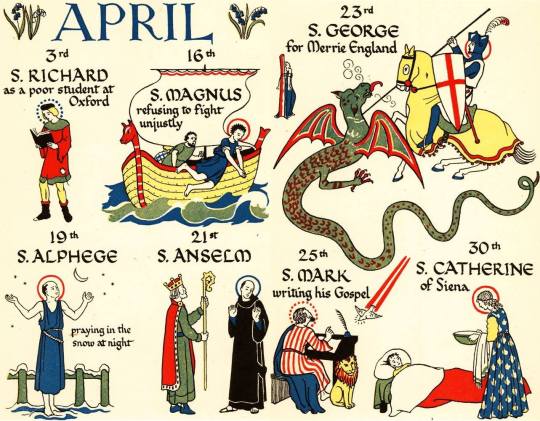
#catholicism#roman catholic#catholic#catholic church#catholic feast days#april feast days#saint richard#saint george#saint catherine of siena
12 notes
·
View notes
Text



















All Saints’ Day
All Saints’ Day is a Christian festival [actually a Catholic holiday] that honors saints, and also celebrates the victory of Christ over death. The definition of saints and those who are being honored on the day are often looked at differently in Catholic and various Protestant churches.
In the Catholic Church, the day is seen as honoring saints that don’t have their own day of celebration. Many Protestants use the day to honor all Christians, both past and present. The day takes place on November 1 in Western churches in Europe and the Americas, such as in Anglican, Roman Catholic, Methodist, Lutheran, and some other Protestant churches. It is part of the Roman Rite in the Catholic Church and is a Principal Feast in the Anglican Church. It takes place a day before All Souls’ Day and a day after All Hallows’ Eve, commonly known as Halloween. Many Eastern churches observe the day on the first Sunday after Pentecost.The day begins with Vespers on All Hallows’ Eve, and the days’ observation lasts for the duration of November 1. In some congregations, a candle is lit or a bell is rung, and the names of congregants who have passed away in the previous year are read. Other prayers and readings may take place on the day. Various customs take place in different countries, such as offerings being made and graves being visited. It is a national holiday in some countries that are predominantly Catholic, but it is not in the United States.The roots of the day go back to the early Christian church. In the late fourth or early fifth century, days dedicated to all saints began being celebrated.
These days were held on different dates in different places. An All Saints’ Day began being celebrated in the British Isles at the beginning of the eighth century, possibly along with or to replace Samhain, a Celtic festival. However, some believe the choice of November 1 for the date was a Germanic idea, not being tied to the Celtic holiday. In 835 CE, Pope Gregory IV officially set the date of the holiday to November 1. After the Reformation, many churches that broke off from the Catholic Church continued to celebrate the day. In some of these churches, it is not always celebrated exactly on November 1, instead being observed on a Saturday or Sunday near it.All Saints’ Day, also known as All Hallows’ Day, All Hallows Tide, Feast of All Saints, Hallowmas, and Solemnity of All Saints, is being observed today! It has always been observed annually on November 1st.
If you are of the Christian faith, you could observe the day by attending a church service and visiting graves of loved ones who have since passed. There are various other ways the day could be observed, such as by having an All Saints’ Day party or learning about saints. If you are not religious, you could still have an All Saints’ Day party and eat some traditional foods associated with the day.
Source
#St. Francis Winery & Vineyards#St. Francis of Assisi by Beniamino Bufano#USA#Robert Mondavi Winery#San Antonio#St. George#St. Peter#Sweden#St. Michael and the Dragon#Notre-Dame-de-Bon-Secours Chapel#Montréal#Québec#St. Georg#Germany#St. Patrick#Cathedral Basilica of St. Augustine#Ss. Peter and Paul Church#All Saints’ Day#1 November#AllSaintsDay#Basilique Notre-Dame de Montréal#La Cathédrale de Strasbourg#St. Patrick's Cathedral#New York City#travel#original photography#vacation#architecture#tourist attraction#cityscape
3 notes
·
View notes
Text



+++ 🙏🏻God Bless🕊️ +++
Orthodox St Gabriel Urgebadze Icon, handicraft, Гавриил (Ургебадзе) a piece of cloth consecrated on the relics of the saint, wooden box
💫 International Orthodox Art Corporation Andcross
May the blessing of the Lord be upon you!
#greek orthodox#orthodox#orthodox christian#orthodox christmas#orthodox church#orthodox icon#orthodoxia#russian orthodox#iconofaday#jesus#saint george hozevite#saint gabriel
2 notes
·
View notes
Text
Russia. Kursk. Church of Saint George Курск. Храм Великомученика Георгия Победоносца
#2017#church#church of saint george#city#kursk#kursk oblast#may#russia#spring#весна#город#курск#курская область#май#россия#храм великомученика георгия победоносца#церковь#flickr#russian tumblr#русский tumblr
3 notes
·
View notes
Text



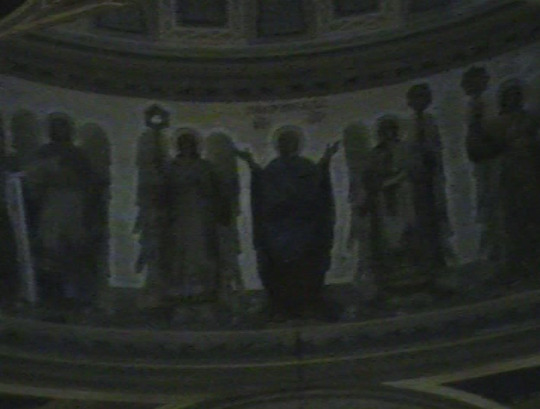


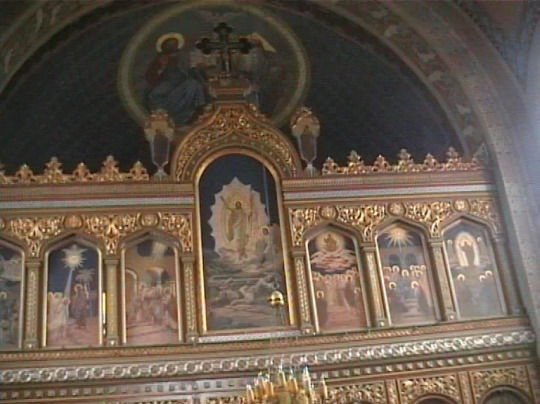

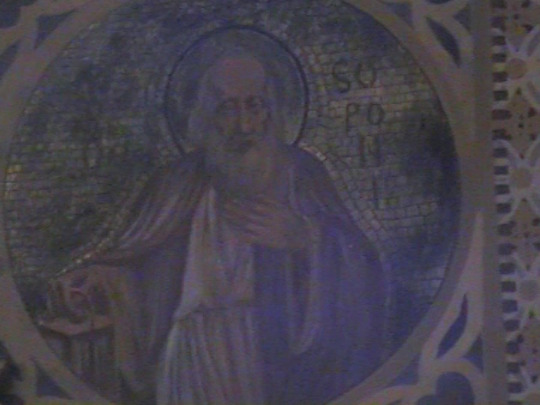
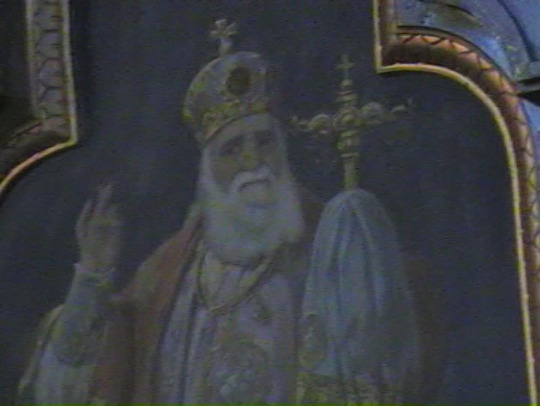
13 notes
·
View notes
Text

Périgueux Cathedral
#church#cathedral#catholiscism#st george#saint george#dragon#religion#art#photography#digital camera#stained glass
3 notes
·
View notes
Text

Saint George the Great Martyr
Icon by me
The Holy Great Martyr George the Victory-Bearer, was a native of Cappadocia (a district in Asia Minor), and he grew up in a deeply believing Christian family. His father was martyred for Christ when George was still a child. His mother, owning lands in Palestine, moved there with her son and raised him in strict piety.
When he became a man, Saint George entered into the service of the Roman army. He was handsome, brave and valiant in battle, and he came to the notice of the emperor Diocletian (284-305) and joined the imperial guard with the rank of comites, or military commander.
The pagan emperor, who did much for the restoration of Roman might, was clearly concerned with the danger presented to pagan civilization by the triumph of the Crucified Savior, and intensified his persecution against the Christians in the final years of his reign. Following the advice of the Senate at Nicomedia, Diocletian gave all his governors full freedom in their court proceedings against Christians, and he promised them his full support.
Saint George, when he heard the decision of the emperor, distributed all his wealth to the poor, freed his servants, and then appeared in the Senate. The brave soldier of Christ spoke out openly against the emperor’s designs. He confessed himself a Christian, and appealed to all to acknowledge Christ: “I am a servant of Christ, my God, and trusting in Him, I have come among you voluntarily, to bear witness concerning the Truth.”
“What is Truth?” one of the dignitaries asked, echoing the question of Pontius Pilate. The saint replied, “Christ Himself, Whom you persecuted, is Truth.”
Stunned by the bold speech of the valiant warrior, the emperor, who had loved and promoted George, attempted to persuade him not to throw away his youth and glory and honors, but rather to offer sacrifice to the gods as was the Roman custom. The confessor replied, “Nothing in this inconstant life can weaken my resolve to serve God.”
Then by order of the enraged emperor the armed guards began to push Saint George out of the assembly hall with their spears, and they then led him off to prison. But the deadly steel became soft and it bent, just as the spears touched the saint’s body, and it caused him no harm. In prison they put the martyr’s feet in stocks and placed a heavy stone on his chest.
The next day at the interrogation, powerless but firm of spirit, Saint George again answered the emperor, “You will grow tired of tormenting me sooner than I will tire of being tormented by you.” Then Diocletian gave orders to subject Saint George to some very intense tortures. They tied the Great Martyr to a wheel, beneath which were boards pierced with sharp pieces of iron. As the wheel turned, the sharp edges slashed the saint’s naked body.
At first the sufferer loudly cried out to the Lord, but soon he quieted down, and did not utter even a single groan. Diocletian decided that the tortured one was already dead, and he gave orders to remove the battered body from the wheel, and then went to a pagan temple to offer thanks.
At this very moment it got dark, thunder boomed, and a voice was heard: “Fear not, George, for I am with you.” Then a wondrous light shone, and at the wheel an angel of the Lord appeared in the form of a radiant youth. He placed his hand upon the martyr, saying to him, “Rejoice!” Saint George stood up healed.
When the soldiers led him to the pagan temple where the emperor was, the emperor could not believe his own eyes and he thought that he saw before him some other man or even a ghost. In confusion and in terror the pagans looked Saint George over carefully, and they became convinced that a miracle had occurred. Many then came to believe in the Life-Creating God of the Christians.
Two illustrious officials, Saints Anatolius and Protoleon, who were secretly Christians, openly confessed Christ. Immediately, without a trial, they were beheaded with the sword by order of the emperor. Also present in the pagan temple was Empress Alexandra, the wife of Diocletian, and she also knew the truth. She was on the point of glorifying Christ, but one of the servants of the emperor took her and led her off to the palace.
The emperor became even more furious. He had not lost all hope of influencing Saint George, so he gave him over to new and fiercesome torments. After throwing him into a deep pit, they covered it over with lime. Three days later they dug him out, but found him cheerful and unharmed. They shod the saint in iron sandals with red-hot nails, and then drove him back to the prison with whips. In the morning, they led him back to the interrogation, cheerful and with healed feet, and the emperor asked if he liked his shoes. The saint said that the sandals had been just his size. Then they beat him with ox thongs until pieces of his flesh came off and his blood soaked the ground, but the brave sufferer, strengthened by the power of God, remained unyielding.
The emperor concluded that the saint was being helped by magic, so he summoned the sorcerer Athanasius to deprive the saint of his miraculous powers, or else poison him. The sorcerer gave Saint George two goblets containing drugs. One of them would have quieted him, and the other would kill him. The drugs had no effect, and the saint continued to denounce the pagan superstitions and glorify God as before.
When the emperor asked what sort of power was helping him, Saint George said, “Do not imagine that it is any human learning which keeps me from being harmed by these torments. I am saved only by calling upon Christ and His Power. Whoever believes in Him has no regard for tortures and is able to do the things that Christ did” (John 14:12). Diocletian asked what sort of things Christ had done. The Martyr replied, “He gave sight to the blind, cleansed the lepers, healed the lame, gave hearing to the deaf, cast out demons, and raised the dead.”
Knowing that they had never been able to resurrect the dead through sorcery, nor by any of the gods known to him, and wanting to test the saint, the emperor commanded him to raise up a dead person before his eyes. The saint retorted, “You wish to tempt me, but my God will work this sign for the salvation of the people who shall see the power of Christ.”
When they led Saint George down to the graveyard, he cried out, “O Lord! Show to those here present, that You are the only God in all the world. Let them know You as the Almighty Lord.” Then the earth quaked, a grave opened, the dead one emerged from it alive. Having seen with their own eyes the Power of Christ, the people wept and glorified the true God.
The sorcerer Athanasius, falling down at the feet of Saint George, confessed Christ as the All-Powerful God and asked forgiveness for his sins, committed in ignorance. The obdurate emperor in his impiety thought otherwise. In a rage, he commanded both Athanasius and the man raised from the dead to be beheaded, and he had Saint George again locked up in prison.
The people, weighed down with their infirmities, began to visit the prison and they there received healing and help from the saint. A certain farmer named Glycerius, whose ox had collapsed, also visited him. The saint consoled him and assured him that God would restore his ox to life. When he saw the ox alive, the farmer began to glorify the God of the Christians throughout all the city. By order of the emperor, Saint Glycerius was arrested and beheaded.
The exploits and the miracles of the Great Martyr George had increased the number of the Christians, therefore Diocletian made a final attempt to compel the saint to offer sacrifice to the idols. They set up a court at the pagan temple of Apollo. On the final night the holy martyr prayed fervently, and as he slept, he saw the Lord, Who raised him up with His hand, and embraced him. The Savior placed a crown on Saint George’s head and said, “Fear not, but have courage, and you will soon come to Me and receive what has been prepared for you.”
In the morning, the emperor offered to make Saint George his co-administrator, second only to himself. The holy martyr with a feigned willingness answered, “Caesar, you should have shown me this mercy from the very beginning, instead of torturing me. Let us go now to the temple and see the gods you worship.”
Diocletian believed that the martyr was accepting his offer, and he followed him to the pagan temple with his retinue and all the people. Everyone was certain that Saint George would offer sacrifice to the gods. The saint went up to the idol, made the Sign of the Cross and addressed it as if it were alive: “Are you the one who wants to receive from me sacrifice befitting God?”
The demon inhabiting the idol cried out, “I am not a god and none of those like me is a god, either. The only God is He Whom you preach. We are fallen angels, and we deceive people because we are jealous.”
Saint George cried out, “How dare you remain here, when I, the servant of the true God, have entered?” Then noises and wailing were heard from the idols, and they fell to the ground and were shattered.
There was general confusion. In a frenzy, pagan priests and many of the crowd seized the holy martyr, tied him up, and began to beat him. They also called for his immediate execution.
The holy empress Alexandra tried to reach him. Pushing her way through the crowd, she cried out, “O God of George, help me, for You Alone are All-Powerful.” At the feet of the Great Martyr the holy empress confessed Christ, Who had humiliated the idols and those who worshipped them.
Diocletian immediately pronounced the death sentence on the Great Martyr George and the holy Empress Alexandra, who followed Saint George to execution without resisting. Along the way she felt faint and slumped against a wall. There she surrendered her soul to God.
Saint George gave thanks to God and prayed that he would also end his life in a worthy manner. At the place of execution the saint prayed that the Lord would forgive the torturers who acted in ignorance, and that He would lead them to the knowledge of Truth. Calmly and bravely, the holy Great Martyr George bent his neck beneath the sword, receiving the crown of martyrdom on April 23, 303.
The pagan era was coming to an end, and Christianity was about to triumph. Within ten years, Saint Constantine (May 21) would issue the Edict of Milan, granting religious freedom to Christians.
Of the many miracles worked by the holy Great Martyr George, the most famous are depicted in iconography. In the saint’s native city of Beirut were many idol-worshippers. Outside the city, near Mount Lebanon, was a large lake, inhabited by an enormous dragon-like serpent. Coming out of the lake, it devoured people, and there was nothing anyone could do, since the breath from its nostrils poisoned the very air.
On the advice of the demons inhabiting the idols, the local ruler came to a decision. Each day the people would draw lots to feed their own children to the serpent, and he promised to sacrifice his only daughter when his turn came. That time did come, and the ruler dressed her in her finest attire, then sent her off to the lake. The girl wept bitterly, awaiting her death. Unexpectedly for her, Saint George rode up on his horse with spear in hand. The girl implored him not to leave her, lest she perish.
The saint signed himself with the Sign of the Cross. He rushed at the serpent saying, “In the Name of the Father and of the Son and of the Holy Spirit.” Saint George pierced the throat of the serpent with his spear and trampled it with his horse. Then he told the girl to bind the serpent with her sash, and lead it into the city like a dog on a leash.
The people fled in terror, but the saint halted them with the words: “Don’t be afraid, but trust in the Lord Jesus Christ and believe in Him, since it is He Who sent me to save you.” Then the saint killed the serpent with a sword, and the people burned it outside the city. Twenty-five thousand men, not counting women and children, were then baptized. Later, a church was built and dedicated to the Most Holy Theotokos and the Great Martyr George.
Saint George went on to become a talented officer and to amaze the world by his military exploits. He died before he was thirty years old. He is known as Victory Bearer, not only for his military achievements, but for successfully enduring martyrdom. As we know, the martyrs are commemorated in the dismissal at the end of Church services as “the holy, right victorious martyr....”
Saint George was the patron saint and protector of several of the great builders of the Russian state. Saint Vladimir’s son, Yaroslav the Wise (in holy Baptism George), advanced the veneration of the saint in the Russian Church. He built the city of Yuriev [i.e., “of Yurii.” “Yurii” is the diminutive of “George”, as “Ivan” is of “John”], he also founded the Yuriev monastery at Novgorod, and he built a church of Saint George the Victory Bearer at Kiev.
The day of the consecration of Saint George’s Church in Kiev, November 26, 1051 by Saint Hilarion, Metropolitan of Kiev and All Rus, has entered into the liturgical treasury of the Church as a special church feastday. Yuriev Day is beloved by the Russian people as an “autumn Feast of Saint George.”
The name of Saint George was also borne by the founder of Moscow, Yurii Dolgoruky (+ 1157), who was the builder of many churches dedicated to Saint George, and the builder of the city of Yuriev-Polsk. In the year 1238 the heroic fight of the Russian nation against the Mongol Horde was led by the Great Prince Yurii (George) Vsevolodovich of Vladimir (February 4), who fell at the Battle at the Sita River. His memory, like that of Igor the Brave, and defender of his land, was celebrated in Russian spiritual poems and ballads.
The first Great Prince of Moscow, when Moscow had become the center of the Russian Land, was Yurii Danilovich (+ 1325), the son of Saint Daniel of Moscow, and grandson of Saint Alexander Nevsky. From that time Saint George the Victory Bearer, depicted as a horseman slaying the serpent, appeared on Moscow’s coat of arms, and became an emblem of the Russian state. This has strengthened Russia’s connections with Christian nations, and especially with Iberia (Georgia, the Land of Saint George).
(www.oca.org/saints/lives/2015/…)
Saint George the Victory Bearer and Great Martyr, pray for us!
#byzantine#Byzantine icon#christian#Greek#Greek orthodox#icon#iconography#martyr#orthodox#Orthodox Church#Russian#Russian orthodox#saint#Saint George#saints#christian iconography#Eastern Orthodox#Russian icon#Greek icon#Eastern Orthodox Church#orthodox icon#Saint George the martyr#great saint#orthodox martyr#Wonderworking saint#trophy bearer#English saint#saint icon#orthodoxy#christianity
17 notes
·
View notes
Text
The small but completely lovely (and loved) Church of St. George at Milson.








6 notes
·
View notes
Text

Protestant church in Villeneuve-Saint-Georges, southeastern suburbs of Paris
French vintage postcard
#postal#sepia#villeneuve-saint-georges#villeneuve#ephemera#southeastern#briefkaart#french#photo#photography#suburbs#historic#postcard#paris#vintage#postkaart#tarjeta#carte postale#postkarte#georges#saint#ansichtskarte#church#protestant
2 notes
·
View notes
Text

A.VILA ARRUFAT. SAINT GEORGE AND S. AUGUSTINE. 2 STAINED GLASS. SPAIN.CIRCA 1950 ebay art-collector-cat
3 notes
·
View notes
Photo

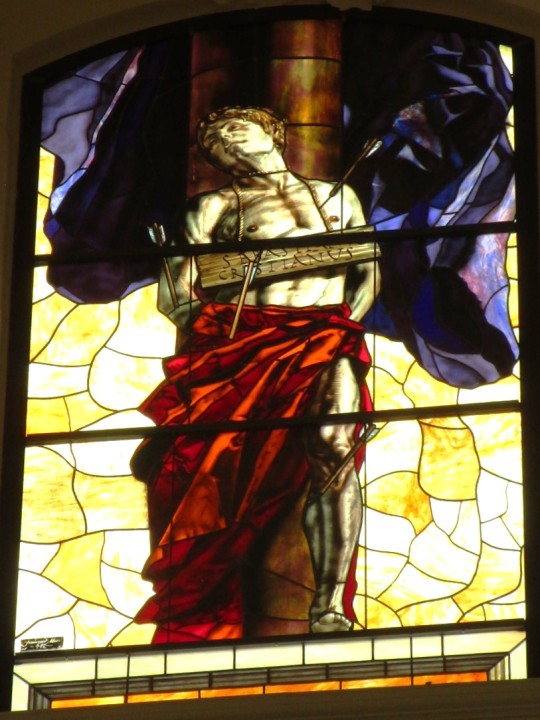
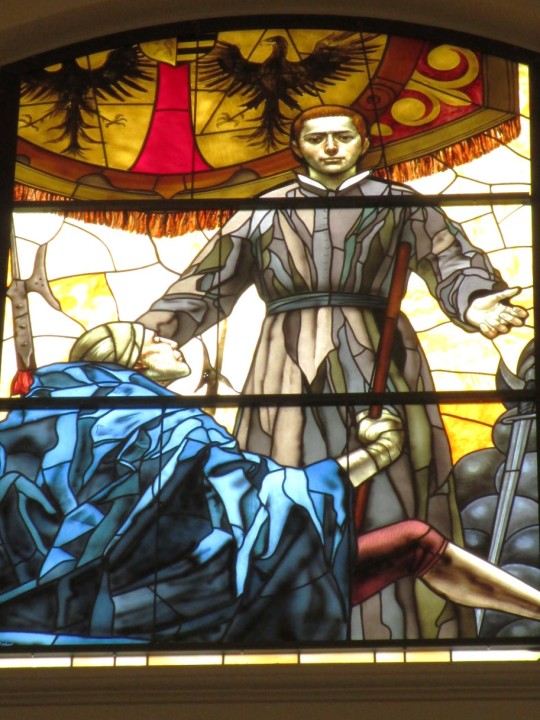
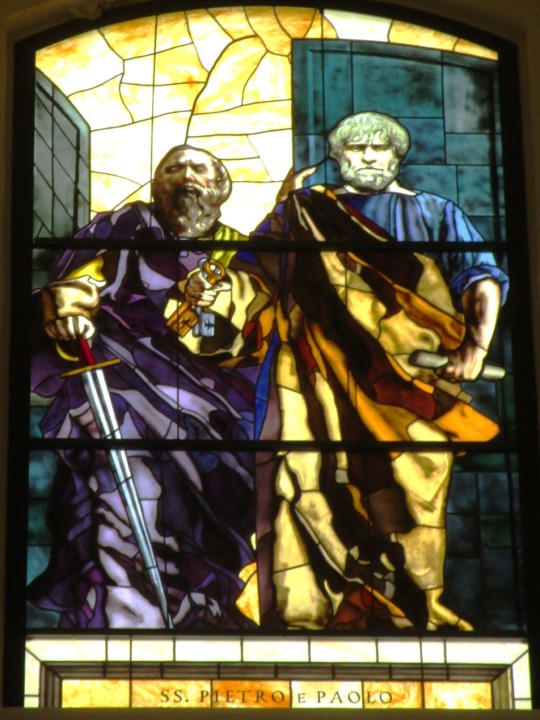
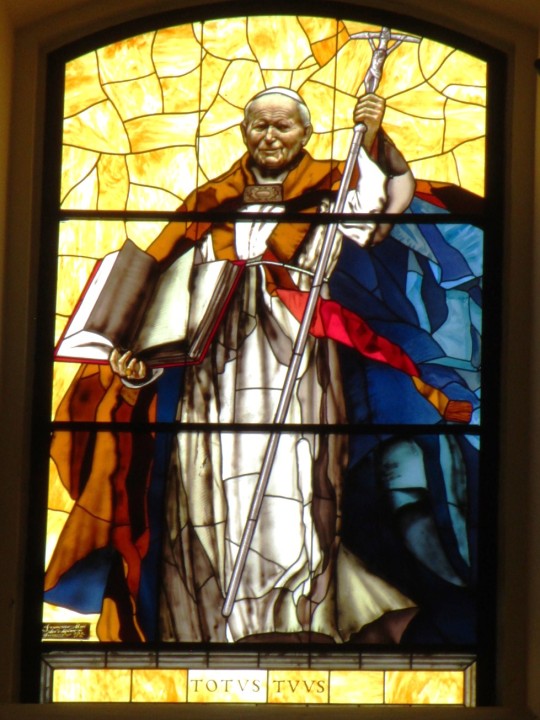
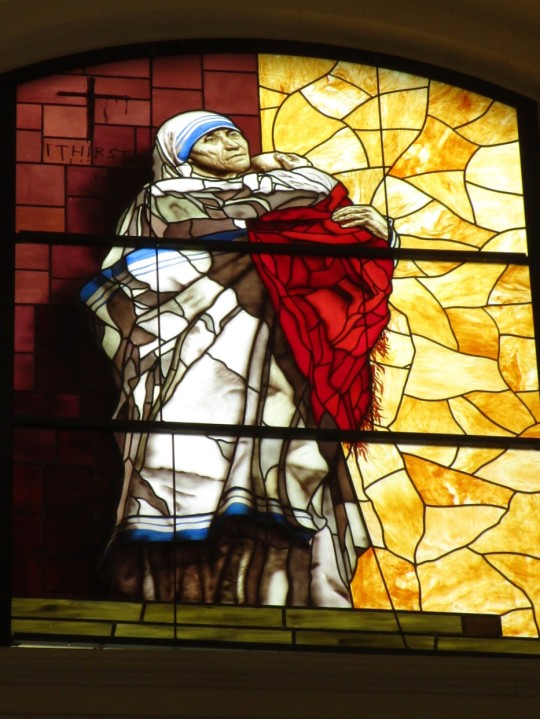


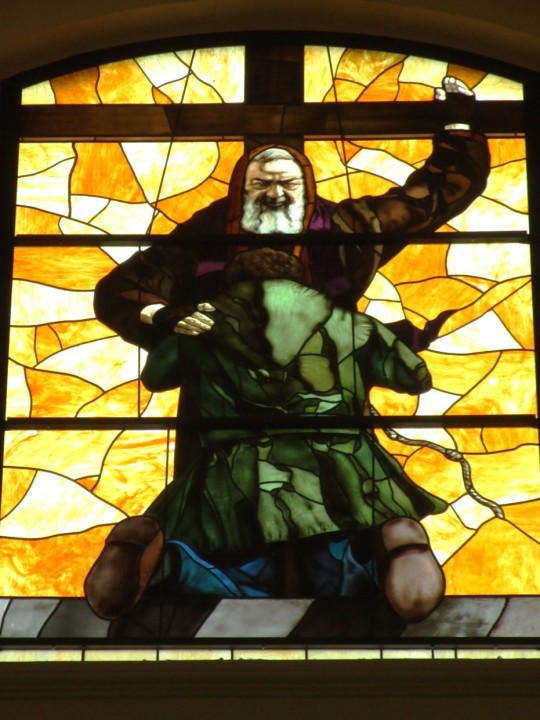

Contemporary stained-glass windows designed by Francesco Mori for the Cathedral of Noto, Sicily
Photos by Charles Reeza
#contemporary religious art#Roman Catholic church#Italy#Italian artist#saints#st. george and the dragon#St. Sebastian#Sicilia
16 notes
·
View notes
Text
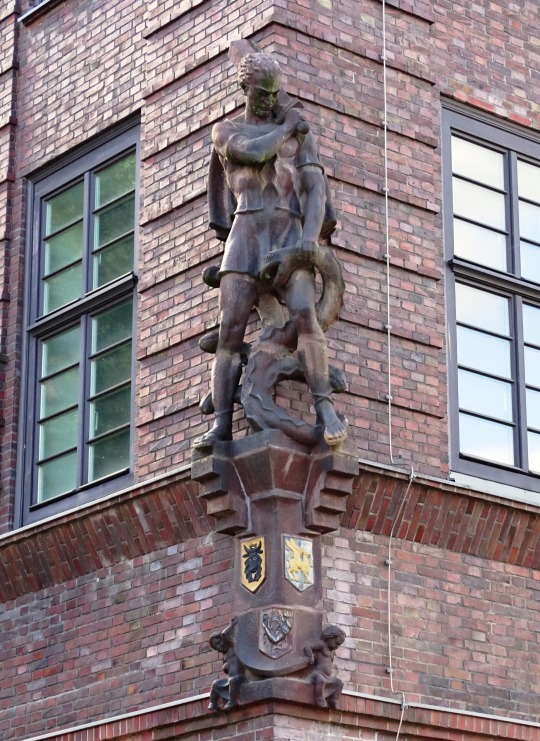
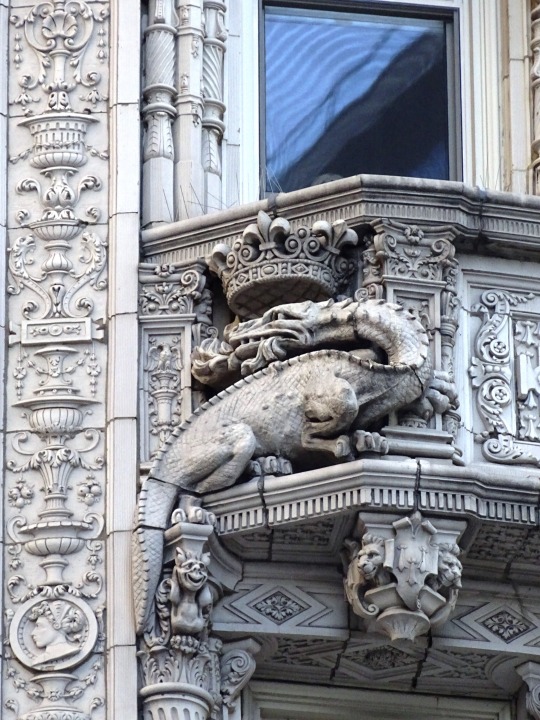
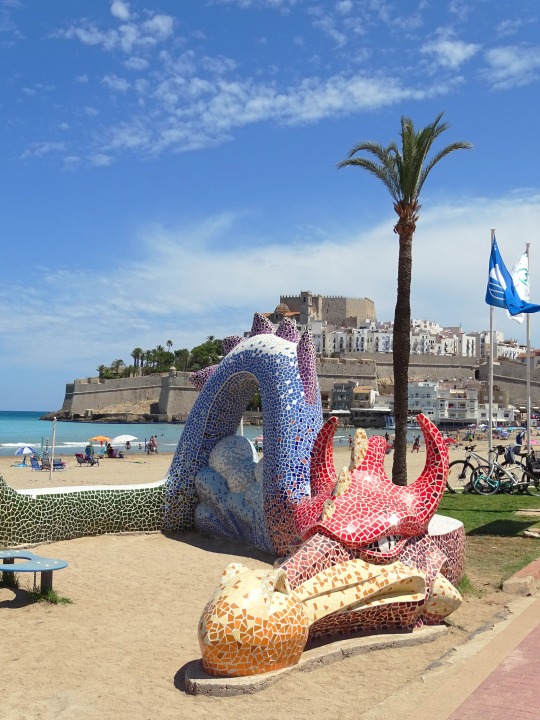


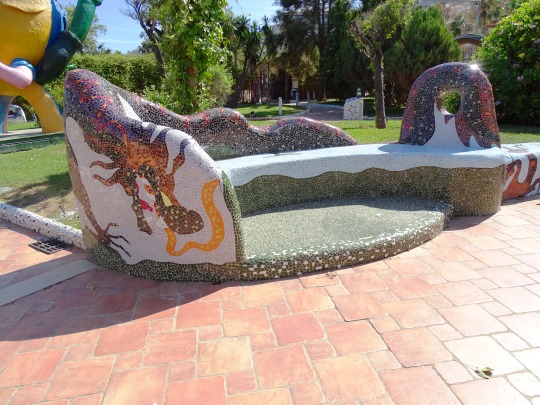


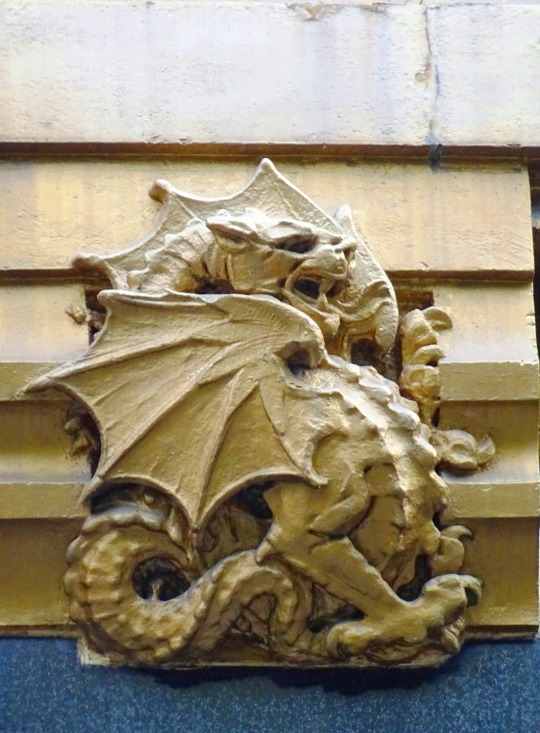

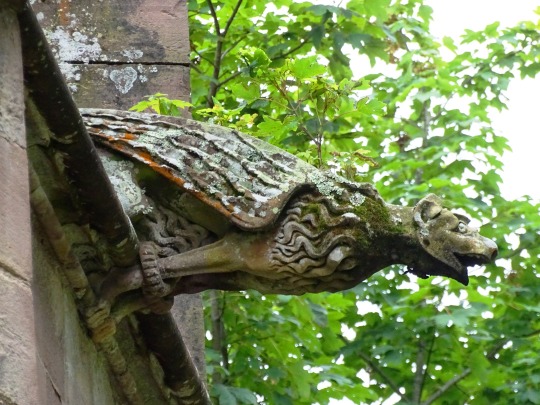
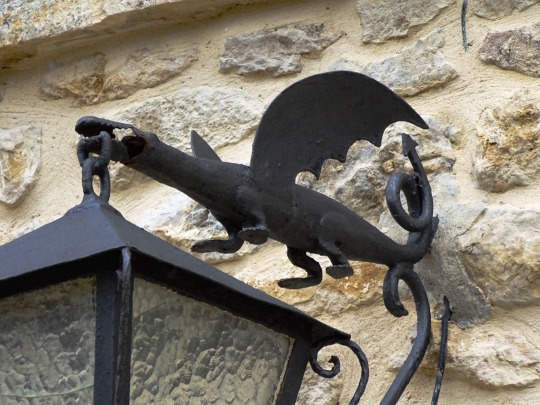
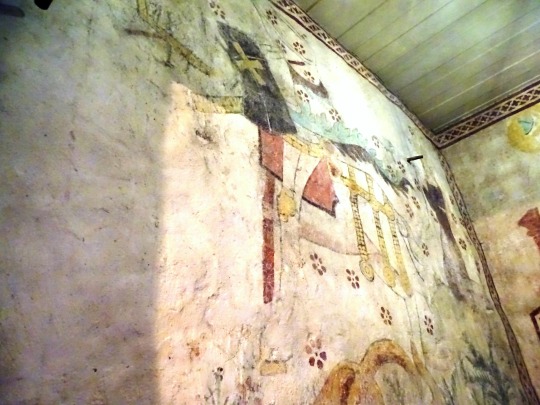


St. George’s Day
Legend has it that St. George slayed a dragon and saved a princess. Today, his bravery is celebrated worldwide, inspiring us to be courageous.
Named after St. George, the patron saint of England, St. George’s Day is a cultural and national holiday marked with events and celebrations, including parades, music, and traditional English food. It is an important part of English culture and heritage, and is a time for people to come together and celebrate their country and its history.
History of St. George’s Day
St. George was a soldier in the Roman army who is venerated as a saint and is the patron saint of England. According to legend, he was a brave and noble knight who fought against evil and injustice. The most famous legend about St. George is that he slayed a dragon that was terrorizing a town and threatening to kill a princess. In the story, St. George rode up on his horse, drew his sword, and killed the dragon, saving the princess and the town.
There are many different versions of the legend of St. George, and it is unclear how much of it is based on fact and how much is myth. However, St. George is still widely revered as a symbol of courage, and his story has inspired many people over the years.
In reality, St. George was likely a real person who lived in the 3rd or 4th century AD. He was born in Palestine and later became a Roman soldier. He is believed to have been martyred for his Christian faith, and was later canonized as a saint.
St. George’s Day has been celebrated in England for centuries, with the earliest recorded celebrations dating back to the 12th century, when he was named the patron saint of England. At the time, St. George was already a popular saint in the Christian world, and he was revered for his bravery and selflessness.
Over the centuries, St. George’s Day became an important holiday in England, and it was observed with various ceremonies and celebrations. In the Middle Ages, St. George’s Day was a major feast day, and people would attend church services, hold parades, and hold feasts in his honor.
How to Celebrate St. George’s Day
St. George’s Day is typically celebrated in England on April 23rd every year, and one of the most common ways it’s celebrated is through parades and processions. These may include marching bands, floats, and groups of people dressed in traditional English costumes. In some places, people may also hold festivals or fairs with food, music, and other entertainment.
If you would like to celebrate St. George’s Day, there are many ways to do so, here are a few ideas:
Fly the Flag
One way to celebrate St. George’s Day is by flying the English flag. This can be done by hanging a flag outside your home or office, or by wearing a flag pin or clothing item that features the flag. This is a simple and visible way to show your support for England and its patron saint.
Attend a Parade
Many towns and cities in England hold parades on St. George’s Day, featuring traditional costumes, music, and activities. This is a fun and festive way to celebrate the day and experience English culture.
Learn About St. George
If you’re interested in learning more about St. George, one way to celebrate is by reading about his life and legacy. You can learn about his history, the legends associated with him and the ways he is celebrated. This can be a more educational way to observe the day.
Cook English Food
Celebrating St. George’s Day could also be an opportunity to try some traditional English food, such as roast beef and Yorkshire pudding, fish and chips, or shepherd’s pie. You can also make your own version of these dishes, or try a recipe for a classic English dessert such as trifle or Bakewell tart.
Source
#St. George#Lugo Cathedral#Saint George Tropoforos Hellenic Orthodox Church#Church of Old Uppsala#Rostock#Comillas#Santillana del Mar#Manhattan#New York City#Alwyn Court#American Radiator Building#stained glass window#summer 2021#2018#original photography#architecture#Germany#Sweden#Spain#tourist attraction#landmark#cityscape#St. George’s Day#23 April#StGeorgesDay#travel#vacation#USA#Peñiscola
2 notes
·
View notes

